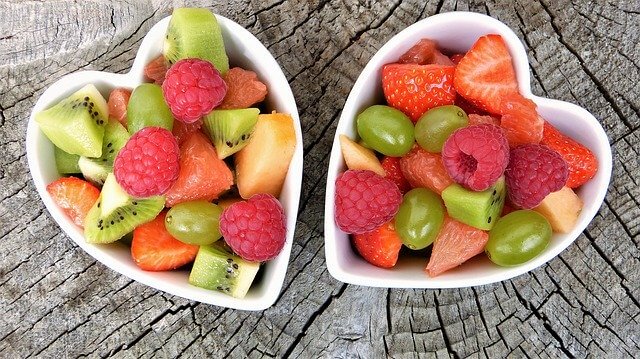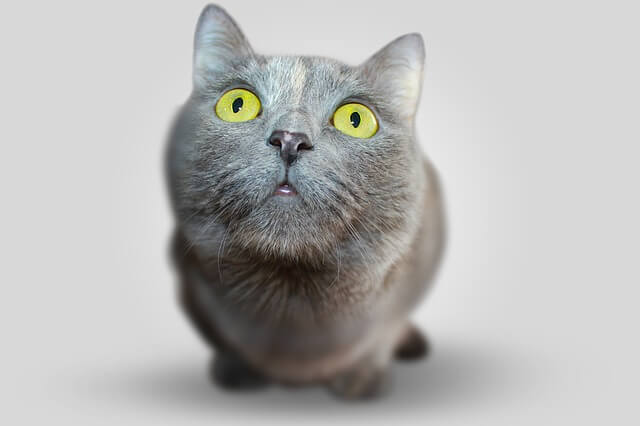Interesting facts about cat food for kids are here to help you find out how to feed better your beloved pet, whether it is necessary to make the cat’s diet diverse and why it is better not to give milk to cats at all.
Nutrition for pets determines their health and well-being. All pet owners know how important is the constant access to fresh, not boiled water. However, feeding rules are not so clear and remain rather complicated and confusing.
We talked with veterinarians and learned 10 interesting facts about the organization of feeding for your lovely pets. Take them into account, so that your pets live a long and happy life.
1. Homemade food is digested only by 30%
There are three main ways of feeding. You can give to your cat homemade food, dry cat food or canned wet cat food.
In the first case, the pet receives the same food that people eat. Such food is suitable for people, but not for your cat, because digestion and enzyme production in the cats’ organism occur slightly differently than in humans’ one. Cat’s organism cat digest food “from the table” only by 30%.
If you give homemade food to your pet, it is better to feed your friend with cereals, vegetables, meat, fish, vitamins. The digestibility of such food is 50-55%. Nevertheless, even in this case it can be not enough for the animal, as homemade food will not provide a balanced diet.
Experts recommend feeding cats with packaged food that you can find in specialized stores. This feeding scheme is the most effective. Dry food is digested by 85%, wet one is by 95-97%.
All three approaches to feeding pets have their advantages and disadvantages. And only the owner can choose the right option, the main thing is not to confuse the ideas about the “healthy diet” with the real needs of the animal in nutrients, vitamins and microelements. Often, the first two schemes lose in economy, nutrition and balance.
2. Homemade food does not provide a balanced diet
Cats have to eat the food which the owner offers to them. And his or hers ideas about a “healthy and tasty” diet often differ greatly from the real needs of the pet. Studies in the field of pets’ health emphasize the importance of balanced nutrition. Only a few owners can make the right balanced diet of natural ingredients. Therefore, most cats in all developed countries of the world eat ready-made dry food. Such mixtures have several advantages, as the best cat food:
- a complete and balanced diet;
- saving time, you can take feedstuff for the trip;
- ready-to-use food is stored for a long time and does not deteriorate;
- the same feces allow to monitor the condition of the pet and help to notice when some disease begins.
3. Cats need a stable monotonous diet
Only the owner decides to change the cat’s diet and buy, for example, dry food with a rabbit instead of usual canned food with tuna. Cats do not need changes. The stable and monotonous the food is better for them, although people need varied food.
Cats’ digestive tract gets used to a monotonous diet, the development of the necessary enzymes is established, the food is easier to digest, and the pet feels better. Changes in the diet do not contribute to normal digestion. Similarly, the transition from one food to another is better done gradually, if you really need to do it. So that the organism accustoms to the process of digesting new food.
4. Feeding from the table and digestive problems
The feeding of “human” food affects digestion. For cats, the greater part of what people consume is useless. They have poorly developed taste buds, so the animal will not appreciate a variety of food. Intestinal flora is arranged differently, so constant feeding “from the table” can provoke indigestion, problems with kidneys, liver, intestines, allergic reactions. Treating all these diseases is long and expensive.
The fact that the pet eats “from the table” is very “eloquent” testifies to the strong smell from the cat’s tray. This is a huge minus for many pet owners.
5. One meal means one type of food
Still you can feed your pet on a combined scheme and give your cat dry and wet food. However, you have to remember that in one meal cats and dogs should eat either dry or wet food. Between meals should not pass less than two hours.
6. Pay attention to the storage conditions
To ensure that the feedstuff retains all its properties, it must be stored correctly in the store and at the owner’s house. Many pet owners forget about this factor.
The food in the store must be stored in a cool dry place, the containers or bags should be closed. Meanwhile the storage temperature has to be stable all the time, storage at both sub-zero temperatures and above room temperature is not allowed. It is desirable to put food into tightly closed containers when you take the purchase home. The longer it is “on the air”, the less useful and pleasing it will be for your lovely cat.
7. Fresh fish in the cat’s diet cannot be more than once a week
Veterinarians state that there are much more minuses than pluses from feeding fish. This superhealthy for people product adversely affects the cats’ organism, provoking a number of health problems, mainly with digestion. Fish are not natural foods for cats, unlike birds, mice and other small animals. People accustomed cats to eat fish.
Now, cats quickly get used to the fish ration. Sometimes “fish-dependent” animals even go on hunger strikes and refuse eating other food. That is why owners have to apply all the skills and ingenuity in order to give fish only once a week. If you decide to feed the pet with fish, please boil the product and clear it of bones, as your cat may choke on them.
Still fish can be very harmful for fluffy hunters’ health. Feeding raw fish leads to a deficiency of vitamin B1, the enzymes contained in it destroy the important vitamin. This causes loss of appetite, nervous disorders and other health problems.
In addition, frequent consumption of fish can provoke problems with the liver and kidneys and lead to the deficiency of vitamin K. If your cat cannot live without fish, treat it to lean sea, pre-cooked fish, but not more than once a week!
8. The cat’s organism cannot digest milk
Contrary to popular belief, cats do not need milk, because it simply does not digest. There are no enzymes in the cats’ intestines to digest milk, so they often have an intestinal disorder. However, sour-milk products are very useful for felines.
It is better to give only to kittens up to three months. For adult cats milk does not fit, because it contains lactose, which the cats’ organism does not digest. And as a result, there may be problems with digestion. Also do not give sour cream to cats, as it is too fatty for them.
9. Metered feeding
If the pet owner does not comply with the norms of nutrition, the risk of urolithiasis and heart disease increases. Overeating is the main factor in the constant dehydration of the body, which leads to the development of urolithiasis. Overeating and sedentary lifestyle leads to an increase in the weight of the animal and the development of heart disease.
10. You can find all the information on the package. Just read it!
Read the instructions on the package and strictly adjust the portions. Each manufacturer gives specific instructions on how much food a pet needs accordingly to its breed, weight, age, etc. No need to give more. The imaginary benefit of overfeeding represents only your desire to flatter your pet, which cat can instead serious health problems. Follow the manufacturer’s instructions, as this will make your life easier, save money, and your pet will be full, healthy and happy.
In addition, you need to understand that neither sweet nor salted food will do not benefit your pet as well.
Most cats are indifferent to sweet treats, not perceiving them as a food product, as they are not rich in protein. However, there are also cats with a sweet tooth, who are fond of ice creams, sweets, chocolate, cakes and pastries.
The owner should remember that any sweets cause great harm to the cat’s organism! Such delights lead to disruption of the digestive system, diseases of internal organs, diabetes mellitus.
Chocolate is completely toxic to cats, eating it can lead to heart rhythm disturbance and even death. Any cake is an unnecessary burden on the liver.
By the way, fruits also contain too much sugar, so do not treat your gourmet with bananas, pears, apples, melons, watermelons. Some fruits, especially exotic ones, are dangerous for cats; they are avocados, persimmons, mangoes and pineapples. Grapes and raisins cause intoxication.
Besides, the cat is unable to digest nuts, which, apart from their uselessness, are also dangerous because they can provoke the strongest allergic reaction, including swelling and stopping breathing.
Do I need to salt food to the cat, add seasonings to enhance the taste, warm up the food?
No, no and NO. You better prepare food at room temperature or slightly higher, please, do not add salt or seasonings, which lead directly to disorders and chronic diseases of the digestive tract.
To the delight of gastroenterologists, people erected a meal in the cult. Cats in this aspect are much wiser: they eat to live, and do not live to eat. Do not impose human vices on these beautiful creatures.









great wonderfull